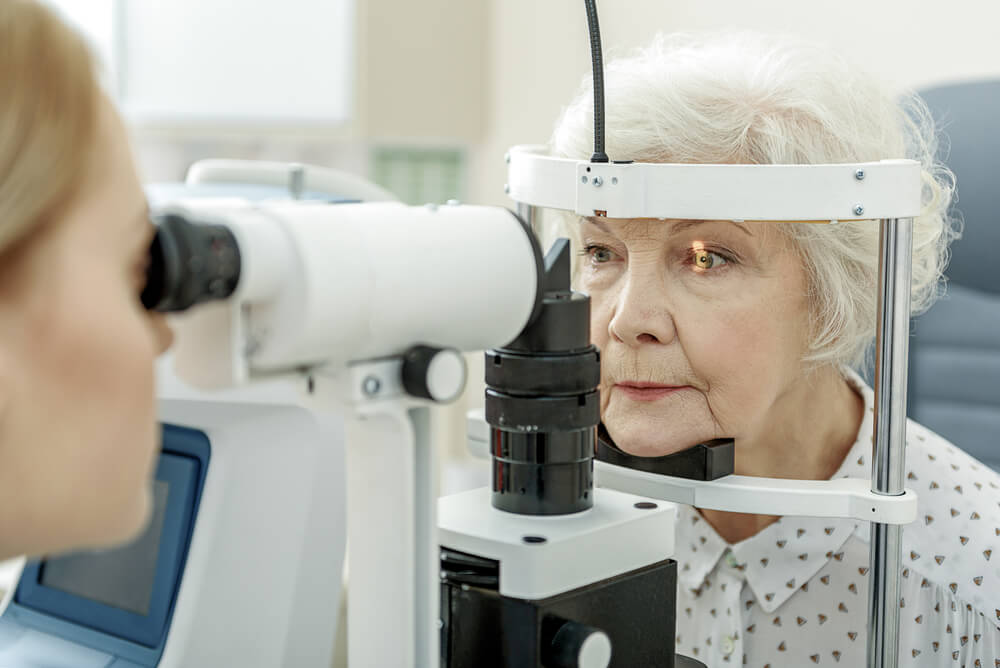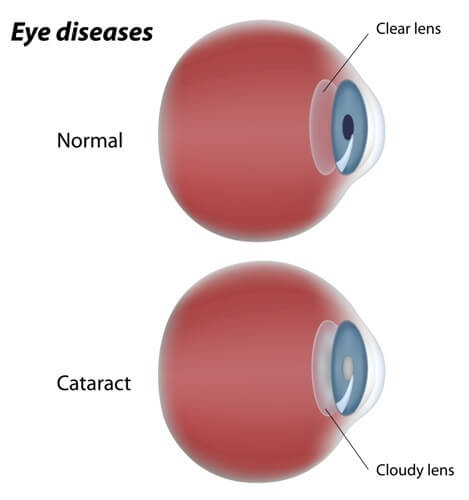What is a Cataract?in Boston, MA

Cataracts are exceedingly common. In fact, most people will have them by the age of 70. This fact aside, many people don’t really know what cataracts are. There are many common misconceptions out there about cataracts, and at the Nielsen Eye Center, we can dispel them.
Understanding the Eye
To understand what a cataract is, a little anatomy lesson is in order. The cornea, the clear, dome-shaped tissue that covers the front of the eye, is partially responsible for letting light into the eye and focusing it onto the retina. Behind the iris (colored part of your eye) and the pupil (the black dot in your eye) sits the lens. The lens is round and clear, and helps you see by focusing light from the cornea onto the retina.
What Is a Cataract?

The lens must remain completely clear for great vision. As we age, the proteins that partially make up the lens begin to break down and clump together. Over time, this creates an opaque film over the lens, now a cataract.
Most cataracts develop slowly over a long period of time. They affect people over the age of 60 most commonly, but it is not unheard of to start developing them in your 40s. These are typically called early onset cataracts.
Cataract symptoms are often not noticeable for a few years after they start developing. Many people just assume that they need new glasses. New glasses and contact lenses can help in the early stages, but eventually, treatment will be necessary to preserve vision. Blindness can occur if cataracts are left long enough, but fortunately, most cases of cataract-related blindness are treatable.
What Causes Cataracts?
The exact cause of cataracts is unknown, but there are some risk factors that can make developing them more likely. The most common risk factor is something you have no control over: your age. The older you are, the more likely it is that you will deal with cataracts.
Other common cataract risk factors include:
- Smoking
- UVA/UVB exposure
- Eye diseases such as glaucoma, uveitis, or retinal detachment
- Previous eye surgery
- Diabetes
- Genetics
- Trauma to the eye
Cataract Treatments
Cataracts are only treatable through surgery. Surgery may not sound ideal to everyone, but it is an extremely effective and routine procedure that has been known to produce amazing results. Cataracts cannot be treated with eye drops, diet or any means other than surgery.
The goal of cataract surgery is to remove the cataract-affected lens and replace it with an intraocular lens. An intraocular lens (IOL) is designed to mimic your natural lens, with a few added benefits.
The Nielsen Eye Center offers patients the newest technology in removing cataracts. LASER cataract surgery along with premium IOLs. Premium IOLs are designed to aid the correction of various refractive errors like myopia, hyperopia, astigmatism and even presbyopia and allow the patient to live without glasses or contacts.
Suspect you need cataract surgery? Interested in learning more about cataract surgery? Schedule your appointment at Nielsen Eye Center in Quincy, MA today!



